My daughter Morgan and I had been talking about hiking the Inca Trail for years. So when I told her about the yoga retreat I’d booked in Peru for the following March, she said, “Let’s finally do our Machu Picchu hike—I’ll meet you in Lima after your trip.” Just like that, the plan started to take shape.
We decided on the classic 4-day Inca Trail trek and booked a private hike with Alpaca Expeditions. I’d met a couple in Croatia who had just finished the same trek and couldn’t stop talking about how amazing the experience was—especially the team at Alpaca. That stuck with me, and once I looked into it, I understood why.
Once we decided to go for it, I contacted Alpaca Expeditions and booked their private Classic Inca Trail hike—a 4-day, 3-night trek that ends at Machu Picchu. They also offer group treks, but I liked the idea of going at our own pace. With the altitude and long days ahead, I didn’t want to feel rushed or worry about slowing anyone down.

Alpaca handled all the logistics—permits, passes, gear, and assembling the team that would be with us on the trail. I picked late March because the rainy season would be winding down, everything would still be green and lush, and it’s generally less crowded. Yes, we might get rained on, but I actually liked that tradeoff—it keeps the dust down and makes for better photos anyway. And the flowers were in bloom, which made everything feel even more alive.
They sent over a detailed itinerary and packing list. Morgan and I rented sleeping bags, mats, and a few other essentials through Alpaca to make things easier. We bought lightweight travel pillows and sleeping bag liners, and since they strongly recommended hiking poles, we each got a set. I also made sure we had decent ponchos—rain was definitely still a possibility.
We planned to meet in Lima a couple of days before the trek. Morgan flew in from the States, and I wrapped up my yoga retreat and met her there. We spent two days in Lima—just enough time to catch up, shake off jet lag, and get a little taste of the city—before flying to Cusco.
From there, we gave ourselves a day to adjust to the altitude, wander a bit, and ease into the next phase of the trip.
The night before our trek, Morgan and I made our way through the narrow streets of Cusco to the Alpaca Expeditions office for our orientation meeting. Our guide, Fletcher, greeted us with a warm smile and walked us through what to expect—daily distances, terrain, weather conditions, and what to pack in our daypacks versus the duffle bags the porters would carry.
He handed each of us one of those black Alpaca duffles and reminded us to stay hydrated and aim for a good night’s sleep.
Afterward, we headed to a nearby spot we’d passed earlier—Morena Peruvian Kitchen—for a relaxed dinner and a celebratory pisco sour. It was the perfect low-key way to ease into the adventure ahead.
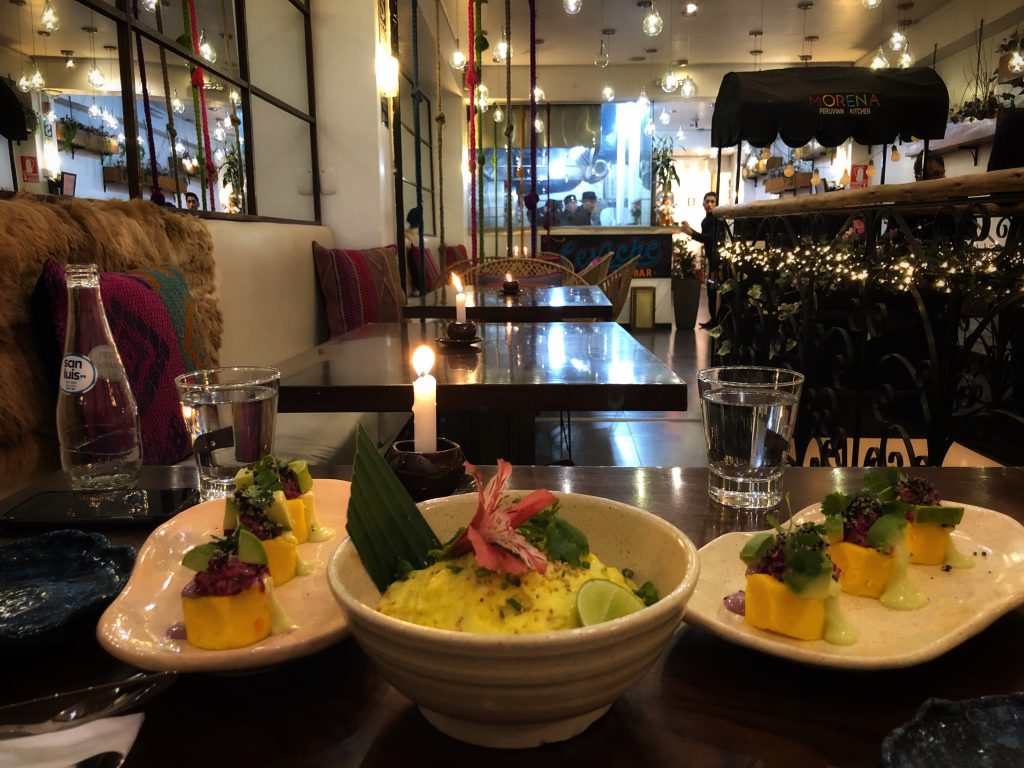
Before the trip, I read Turn Right at Machu Picchu by Mark Adams—it’s part memoir, part travelogue, and part history lesson—and it really opened my eyes to the story behind the famous hike. I’d always known Machu Picchu was a bucket-list destination, but the Inca Trail itself is more than just a route to some ruins. It’s part of an ancient network of paths that once connected the vast Inca Empire.
The trail we walked is just a small piece of what was once called the Qhapaq Ñan—a massive road system that stretched for thousands of miles through the Andes, linking cities, villages, and sacred sites. Along the way, you pass through cloud forests, climb mountain passes, and visit Inca ruins that most people never see—not because they’re less impressive, but because you can only reach them on foot.
That combination of natural beauty, deep history, and physical challenge is what drew us in. Machu Picchu might be the destination, but we had a feeling the real experience would come from the trail itself.
The next morning, we were picked up early from our hotel and driven to The Porter House, a small outpost near Ollantaytambo. There, we met up with Fletcher again and were introduced to the rest of our crew—the porters and the chef who would be with us for the next four days. It still felt a little surreal that this whole team was assembled just for the two of us.

They served us a hot breakfast, and afterward, we handed our duffle bags over to Fletcher so the porters could pack them into their loads—along with tents, sleeping bags, cooking gear, food, dishes, and yes, even a private toilet tent. All of that for just two hikers. Morgan and I kept only our daypacks with water, snacks, and a few layers.
Then we drove to KM82, the official starting point of the Inca Trail. We had our passports checked, snapped the obligatory photo in front of the trail sign (because how could we not?), and crossed the bridge to begin. It finally felt real—this thing we’d talked about for so long was officially underway.
The trail started out gently, following the Urubamba River, with wide views of the Andes and cacti lining the path in some areas. I had hoped we’d catch some flowers, and we did—tiny bursts of color, and even a few orchids tucked into the greenery.
Not far into the hike, we came to our first Inca site: Patallacta. It sits above the river with wide, curving terraces carved into the hillside and stone ruins that hint at a once-bustling agricultural and ceremonial center. Fletcher explained that it likely served as a rest stop and farming hub for pilgrims headed to Machu Picchu. The site itself was empty when we arrived—just us, the ruins, and the mountains—and it was a powerful moment. I had this quiet realization that we weren’t just hiking through pretty scenery—we were walking on sacred, ancient ground.
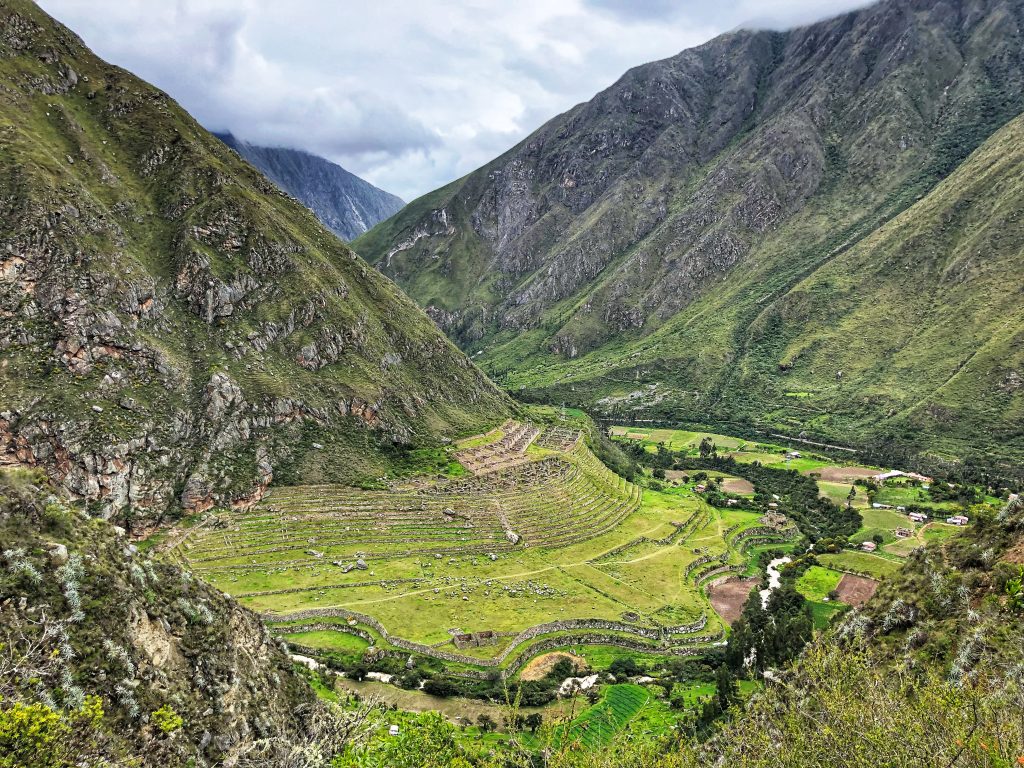
By the time we stopped for lunch, I was more than ready for a break. And—to be honest—it wasn’t just because I was hungry. I really had to use the bathroom. Not just a quick pee, either. I unzipped the toilet tent (which yes, they carried and set up for us) and found the private portable toilet inside. All good—except I had no idea how to flush it. I ended up having to find a porter to help me—absolutely mortifying—but he was kind and discreet. Crisis averted. Sort of.
Right outside the little wooden building where we were about to eat, a handful of guinea pigs were running around—just freely darting back and forth like it was totally normal. It was one of those weird, slightly surreal sights. And we knew guinea pigs are actually a delicacy in Peru, so Morgan and I just looked at each other and said, “Thank God they know we’re vegetarians.”
Lunch was a total feast: hot soup, rice, quinoa, fresh vegetables. There was even a wash station with warm water and soap so we could clean up first. We were already blown away by how well cared for we were—and this was just day one.
After lunch, we had a couple more hours of hiking before reaching our first campsite at Huayllabamba. The path took us through a few small villages and gentle uphill stretches. A light rain hit just before we arrived, but it didn’t last long, and the cool air felt pretty good after the long walk.
When we got to camp, everything was already set up: our tent, air mattresses, sleeping bags laid out and ready. We kicked off our boots and laid down, tired but happy. The setting—surrounded by green hills and mountain air—felt peaceful and far away from everything else.
Dinner was just as good as lunch, and afterward, we crawled into our sleeping bags. Day Two would bring the highest and most challenging part of the trail: Dead Woman’s Pass.
Distance hiked: 14 km (8.6 miles)
Time on the trail: About 6.5 hours
Campsite elevation: 2,750 meters (9,022 feet)
Difficulty: Moderate
We woke up to the sound of one of the porters gently calling out to us. It was barely light, and I was still half-asleep as I unzipped the tent. Outside, the air was cool and crisp, and the mountains were already glowing under the early sun.
Before anything else, they handed us hot mugs of coca tea—meant to help with the altitude. I drank mine slowly while trying to get my brain and body to sync up. Morgan, still wrapped in her sleeping bag, passed on hers. We washed up quickly and headed to the dining tent for breakfast, which, once again, was more than we could’ve hoped for: eggs, toast, fruit, and something warm and comforting in a bowl. We ate well, because we knew what was coming.
Day Two is known as the toughest day of the trek. The climb to Dead Woman’s Pass—Warmiwañusca—is steep and slow, and the air gets noticeably thinner as you go. The pass sits at 4,200 meters (almost 13,800 feet), and the effort required to get there is no joke.
We started out strong, following Fletcher’s advice to take it pole pole—slowly, slowly. The trail wound steadily uphill through forest and open slopes, and the air thinned out quickly. We took breaks often, sometimes just to breathe. I chewed on coca leaves, hoping they’d help a little. Fletcher kept encouraging us, reminding us that it wasn’t a race.
At one point, a porter with a huge pack zipped right past us like it was nothing. He was wearing regular sneakers—no fancy gear, no poles—just moving fast and steady up the same steep trail we were slowly grinding through.
The stone stairs were the hardest part—never-ending, uneven, and steep. I paused a lot. We were quiet, focused, just putting one foot in front of the other. And then, finally, we reached the top.
Standing at the summit of Dead Woman’s Pass felt incredible—even with the overcast sky and clouds rolling past us. The air was thin and cold, and everything around us felt a little surreal. I looked over at Morgan—red-faced, breathing hard, but smiling—and felt proud of both of us. We’d done it. Together.
Honestly, it wasn’t quite as brutal as I’d feared, but the altitude made everything harder. It’s not a casual hike. You earn it
What goes up, of course, must come down—and the descent was no joke either. It took another two hours of steady downhill hiking to reach our lunch stop at Pacaymayu. The trail was steep and slick in places, and by the time we arrived, my legs were more than ready to sit down.
Lunch was another warm and hearty meal (I’m still amazed at what that chef could make with a portable kitchen and limited ingredients). We collapsed into our chairs, devoured everything, and refilled our water for the next stretch.
Because yes—Day Two has not one but two mountain passes. After lunch, we tackled the second one: Runkuracay. It’s not as high or dramatic as Dead Woman’s, but after already hiking for six hours, it felt like a bonus round we didn’t exactly ask for.
Somewhere along the way, we passed the ruins of Runkuracay—a small, circular Inca site nestled on a hillside—and paused just long enough to catch our breath and take it in.

We kept moving, and within another hour or so, we reached Sayacmarca, another beautiful Inca site perched dramatically on a ridge. The trail to reach it is narrow and steep, but the views were incredible—stone walls and staircases overlooking valleys filled with clouds.
From there, the trail began to feel more magical. We were now walking through sections of cloud forest, the air cooler and damper, the trees covered in moss. The fog moved in and out around us. It felt quiet and ancient.

Eventually, we reached our campsite at Chaquicocha—finally. I kicked off my boots and collapsed. It had been a long, hard, beautiful day: two mountain passes, two ancient ruins, and about a million stone stairs.
Dinner that night was quieter. We were tired, full, and in awe of what we’d just done.
Distance hiked: 16 km (9.9 miles)
Time on the trail: About 8 hours
Highest elevation: 4,200 meters (13,780 feet) at Dead Woman’s Pass
Campsite elevation (Chaquicocha): 3,600 meters (11,811 feet)
Difficulty: Challenging
We woke up to strange sounds outside our tent. When I unzipped the flap, I found a group of llamas just hanging out right next to us. Not something you see every morning. Morgan and I laughed and tried to get a few photos, but they didn’t stick around long.
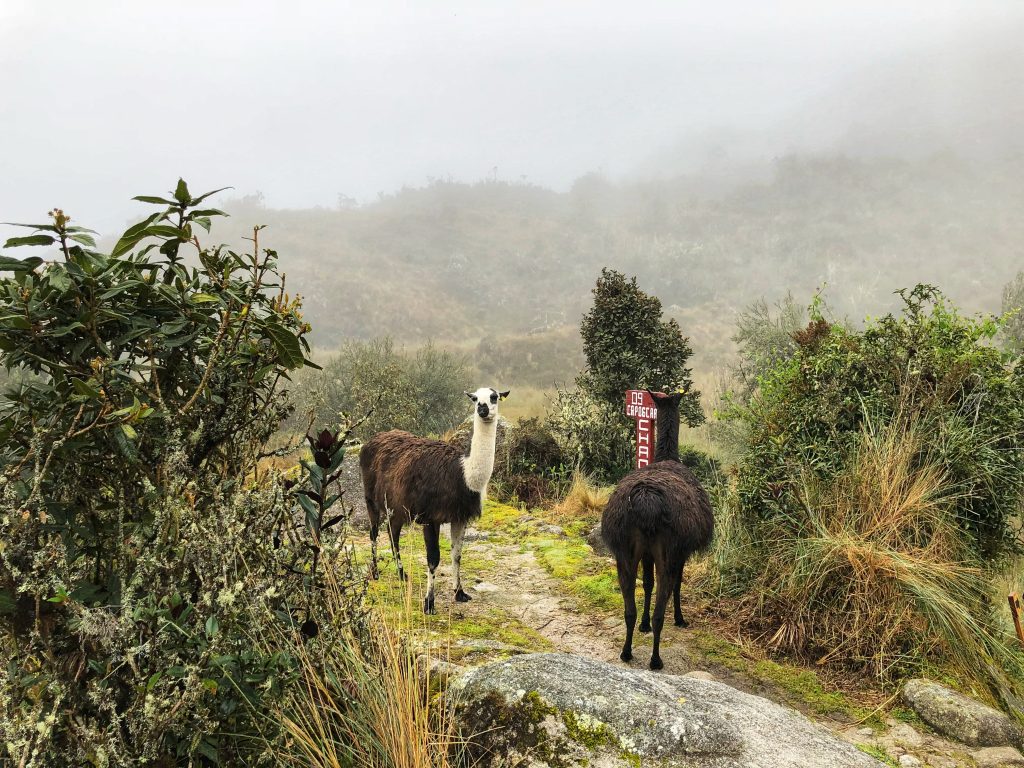
Today’s hike started off easy—mostly flat for the first stretch, which was a nice change after the day before. We moved through quiet cloud forest, still damp from the night, with moss-covered trees and mist drifting in and out of the trail. It looked mysterious—soft, green, and a little eerie, like something out of a dream.
At this point in the trek, we’d hiked through so many different landscapes—dry valleys, high-altitude grasslands, misty cloud forest, and now lush green jungle. The trail never stayed the same for long, and that kept it interesting.
Eventually, we crossed our third and final pass, Phuyupatamarca, which means “Town in the Clouds.” It definitely lived up to the name. Low-hanging clouds floated just above the trail, and the views opened up into deep valleys. Everything felt quiet and remote.
After that, it was all downhill—literally. We started a long, steep descent that seemed to go on forever. The stone staircases were slick in spots, and I relied on my trekking poles more than ever. Intermittent rain throughout the day had made parts of the trail muddy and slippery, and I was moving cautiously. I’ve always found downhill harder than uphill, and I was taking my time.


Along the way, we passed two more Inca ruins. The first was Intipata, a series of sweeping agricultural terraces built right into the side of the mountain. It was one of the most beautiful spots on the trail—simple and elegant, with incredible views of the valley below.
A little further on, we reached Wiñay Wayna, which means “Forever Young.” The site was built into a steep green hillside, with long rows of stone terraces, narrow staircases, and fountains still trickling with water. It was probably the most complete Inca site we saw before Machu Picchu, and it felt almost untouched—like it had been waiting there all this time.
(Eventually, we arrived at our final campsite, also called Wiñay Wayna. The porters greeted us with applause when we walked in, which caught me off guard but was actually really sweet. They had even decorated the dining tent with balloons and made everything feel festive.
Dinner that night was the best of the trek. Somehow, the chef had managed to bake a cake (I’m guessing it was actully steamed)—frosting and all. We all sat together, sharing the meal, laughing a little more, and soaking in the fact that we were almost there. It was hard to believe we only had one day left.

Distance hiked: 10 km (6.2 miles)
Time on the trail: About 5 hours
Campsite elevation: ~2,680 meters (8,792 feet)
Difficulty: Moderate with steep downhill sections
We woke up before 4:00 a.m. It was still completely dark, and everyone was moving around quietly—packing up, brushing teeth by headlamp, adjusting boots and layers. We needed to be at the final checkpoint gate by 5:30, so we could start the last stretch to Machu Picchu with the rest of the trekkers. You have to hike the first part in the dark, so a headlamp is essential.

After a quick breakfast, we headed to the final checkpoint—Red de Caminos Inka. It was the first time on the whole trek that we saw so many hikers gathered in one place. Everyone was lined up in the dark, waiting for the gate to open so they could start the last stretch to the Sun Gate. I don’t remember exactly how it worked, but it seemed like they were letting people through in waves to help manage the crowd. We waited our turn, had our permits checked, and then we were on our way.
The trail started out quietly—just a narrow path winding through the forest, with mist hanging in the air and only the sound of footsteps and a few low voices around us. After about an hour, we reached the final staircase, sometimes called the “Gringo Killer.” It’s steep and narrow, more like climbing a ladder than walking stairs. I put my poles away and used my hands to scramble up.
At the top was the Sun Gate (Inti Punku). The clouds were still low, but we could see pieces of Machu Picchu starting to appear through the mist. It felt surreal to finally be there. Everyone talks about how beautiful the view is from the Sun Gate, and it is—but for me, what made it feel special was knowing we’d walked there.
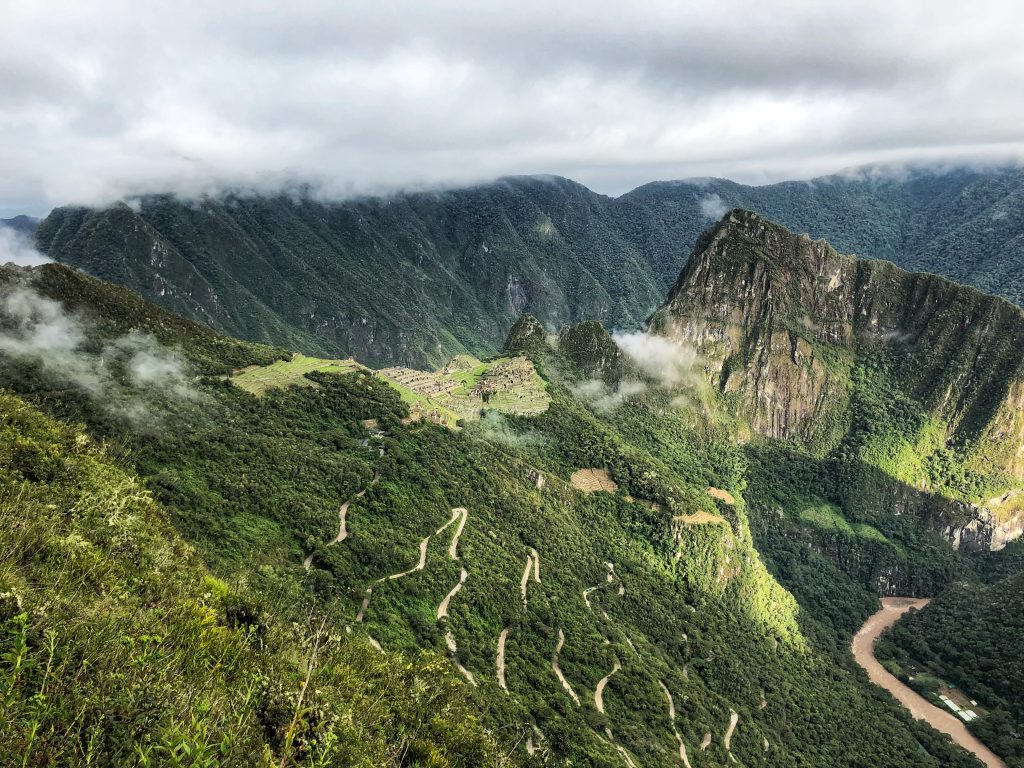

From the Sun Gate, we hiked down into the site itself. As we got closer, the ruins came into full view—terraces, stone walls, the classic postcard angle. There were a lot more people at this point, including visitors who had come up by bus for the day. After four days of quiet and open trail, it was a bit of a shift to suddenly be surrounded by crowds again.
Fletcher gave us a tour—walking us through the different sections and explaining the layout and history of the site. I listened, but I was also just looking around, taking it in. The scale of it, the symmetry, the way it blends into the mountains—it’s impressive.
Morgan and I had passes to climb Huayna Picchu, the steep mountain that rises behind the main ruins—the one in the background of all the classic Machu Picchu photos. The trail to the top starts right inside the site. We had planned to do it, but by the time the tour ended, it was hot, crowded, and we were both just done. We took a few photos, looked around one last time, and decided to skip the climb. The trail had already given us everything we came for and more.
After the tour, we took the shuttle bus down to Aguas Calientes, where I’d booked a basic hotel room. We finally got to shower and change into clean clothes. That alone felt like a small miracle. We grabbed something to eat, had a final pisco sour, and then took the train back to Ollantaytambo, followed by a van to Cusco.
Distance hiked: 5 km (3.1 miles)
Time on the trail: About 1.5 hours
Sun Gate elevation: ~2,720 meters (8,924 feet)
Machu Picchu elevation: ~2,430 meters (7,972 feet)
Difficulty: Short but steep, especially the final climb
The 4-day hike to Machu Picchu with my daughter was even better than I expected. It challenged us, brought us closer, and gave us the chance to see some truly amazing sites. From crossing Dead Woman’s Pass to taking in the views along the trail and finally reaching the Sun Gate with its incredible view of Machu Picchu, it’s an experience I’ll never forget.
For us, even though Machu Picchu was absolutely stunning, Morgan and I both agreed that the real highlight was the journey itself—hiking the trail and exploring the lesser-known sites along the way.
The team took great care of us every step of the way. The meals our chef made were delicious, and our guide, Fletcher, was fantastic. With the challenges of the hike, I couldn’t have asked for better support.
Alpaca Expeditions is a local company that really impressed me. They care about their country, the environment, and supporting local communities.
“In the variety of its charms and the power of its spell, I know of no other place in the weld which can compare with it.”
-Hiram Bingham, ‘discoverer’ of Machu Picchu- Tweet
My advice? Wear comfortable hiking boots, pack a durable poncho, bring sturdy hiking poles, and take your time. Enjoy the journey at your own pace—it’s not a race! The hike is moderately challenging, so being in good health will help you fully appreciate the incredible beauty and history along the way. For me, it was one of the most amazing experiences I’ve ever had, and I can’t recommend it enough.
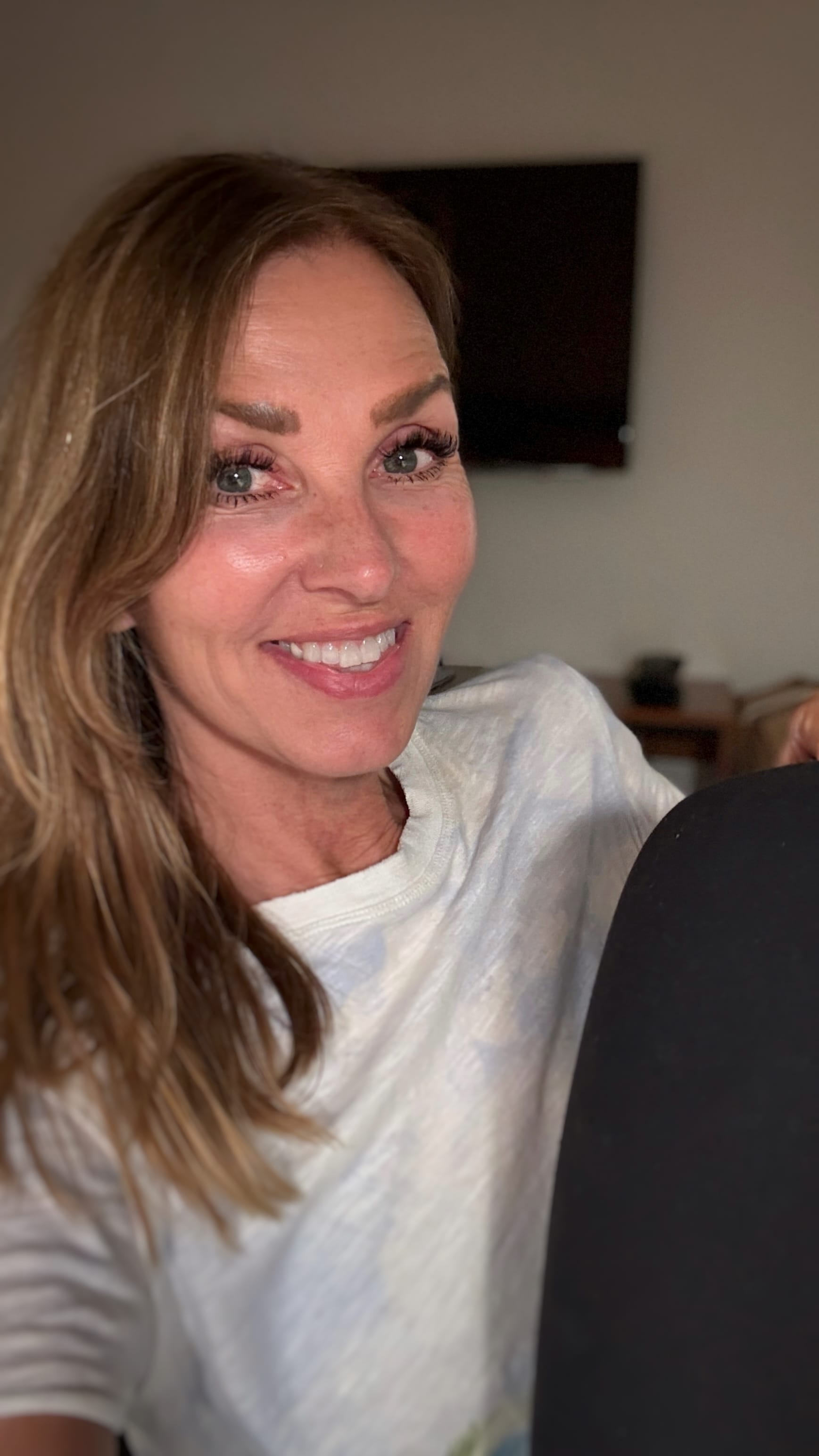
About the Author
Hi, I’m JoAnne—writer, wanderer, and lover of places that surprise me. I’ve traveled to 60+ countries (and counting), usually with a camera in one hand and a notebook in the other. I’m drawn to mosaics, markets, and mountains, and I write to remember what moved me. When I’m not traveling, I’m working on my blog Travels Afoot, trying new creative projects, or planning my next adventure. 📍 More about me | ✈️ Explore destinations